Our ‘forests’ look a little different here in the Sonoran Desert. Instead of towering trees, we have giant columnar cacti! While saguaro cacti are the most well-known of these giant cacti in the U.S., several other species occupy different regions of the Desert, including organ pipe cactus, senita cactus, candelabra cactus, and cardon cactus. The saguaro is well-loved here in the desert southwest by desert dwellers and visitors alike. Learn all about the Sonoran Desert’s stunning saguaros with these ten fascinating facts!
Like trees in a forest, the saguaro is a keystone species. This means that nearly every other organism in its range is ecologically intertwined with it. The saguaro cactus grows in southern Arizona and western Sonora, with only a few specimens extending beyond this range, into California and Sinaloa. This relatively restricted range means that the ecology in this area is truly unique!

The saguaro is the largest cactus in the United States. These sun-loving plants commonly reach heights of 40 feet, and a few saguaro giants grow to sixty feet and beyond! They may look small from farther away, but standing beneath one of these majestic giants is truly humbling.
Saguaro, or apartment complex? Saguaro cacti provide homes for many desert creatures. Gila woodpeckers and gilded flickers excavate nest holes in the cactus’s fleshy stems, and as they move on to other nests, other birds move in! Elf owls, house finches, ash-throated flycatchers, and purple martins all occupy these abandoned holes, as do invertebrates. Larger birds will build nests in the spots between the stem and arms, or use the cactus as hunting perches – or just as a rest-stop!
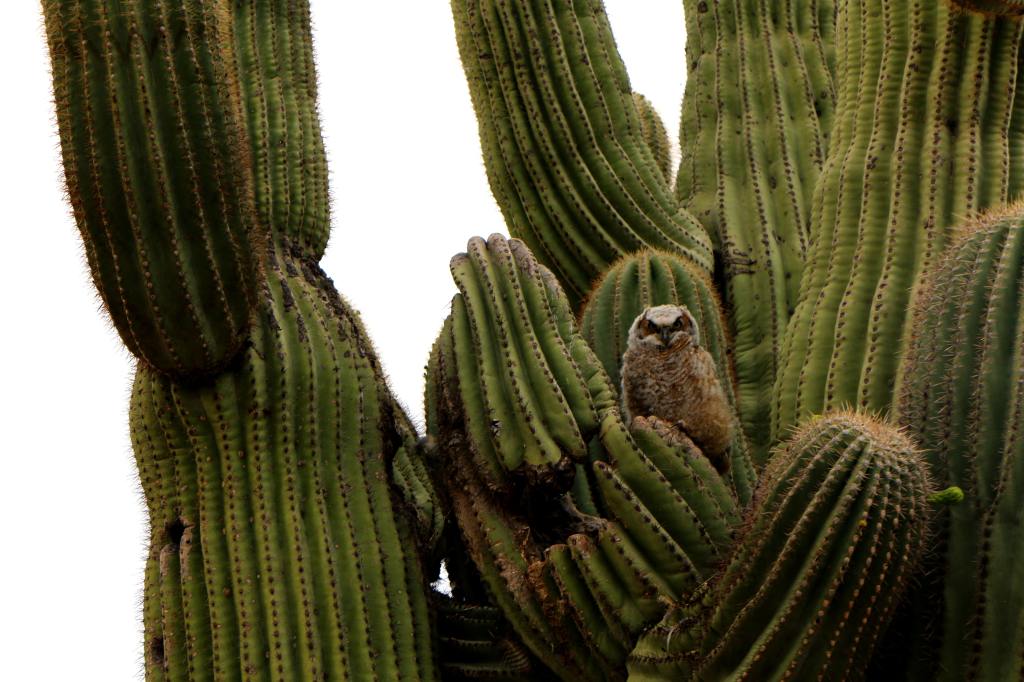

In the center of the saguaro is a woody skeleton. This structural foundation consists of 15-20 woody ribs, fused along the length of the stem and separated within the younger arms. These ribs support the immense weight and size of the cacti and all of the water stored within its tissues. Just one foot of a large, well-hydrated stem can weigh over 80-90 pounds, and the entire saguaro over a ton!
The saguaro is well-adapted to prevent water loss. Like many other cacti, the epidermis or skin of the saguaro consists of a waxy, waterproof cuticle that restricts transpiration to the stomates. Transpiration is the loss of water vapor into the surrounding air, and the stomates are basically pores! This waxy surface is folded into accordion-style pleats that can expand as the stem brings in water from the roots without stretching or bursting.
Saguaro spines provide a line of defense against two threats: herbivorous animals and excess heat. These spines line the ridges of the outer pleats and create shade from the blistering sun, which reduces the plant’s overall head load. The result? Less water is lost from heat.
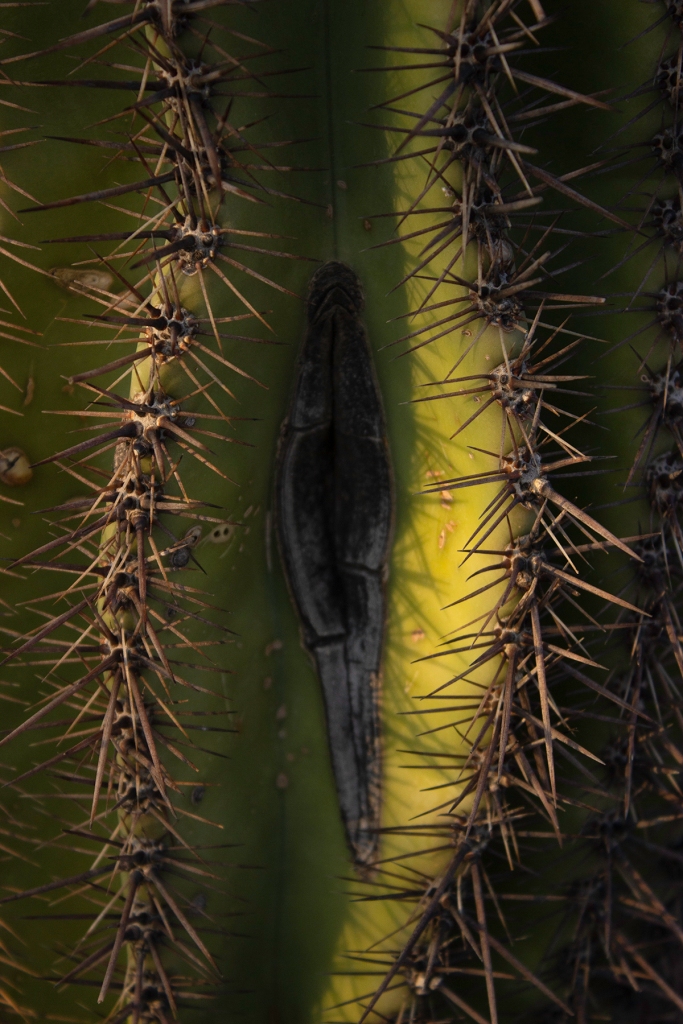


Every saguaro is unique, and some, like (2) and (3) pictured here, develop wavy or undulating patterns.
The saguaro is 75-85% water. Where is it all stored, you ask? Parenchyma! Parenchyma is the water-storage tissue that makes up the bulk of the plant, located in the interior of the plant beneath the epidermis and the layer of cells working hard on photosynthesis. This bulk of water further protects the plant through aqueous thermal regulation, stabilizing the plant’s internal temperature on especially hot days and freezing nights.
Saguaro seedlings nearly always require a “nurse plant” to survive. The vast majority of seedlings are eaten or perish from weather extremes. The most common nurse plant for the saguaro cactus is the Palo Verde tree. As the saguaro establishes and grows, it begins to compete with its nurse plant, sometimes hastening its death! As a result, mature saguaros often stand alone in the landscape.
Saguaros produce an abundance of nutritious fruits during the hottest and driest time of year, in the months before the annual monsoon. These tasty fruits ripen at just the right time for our desert denizens, when food and water is scarce. Saguaro fruit becomes a staple food and a life-saving source of water for many birds, mammals, and insects during this harsh foresummer!
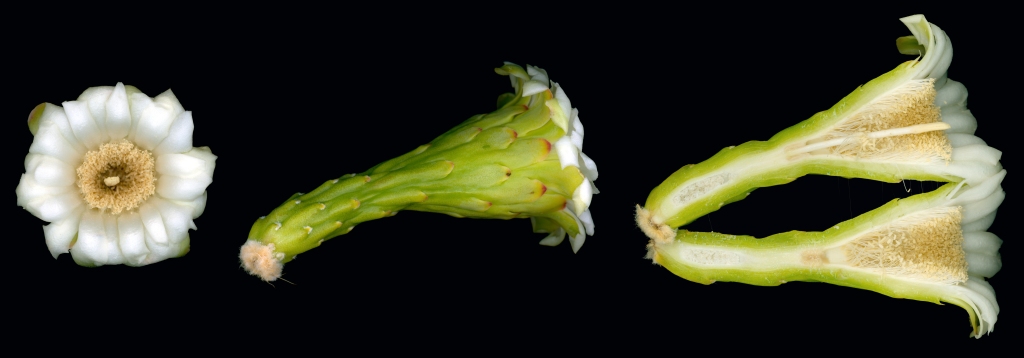
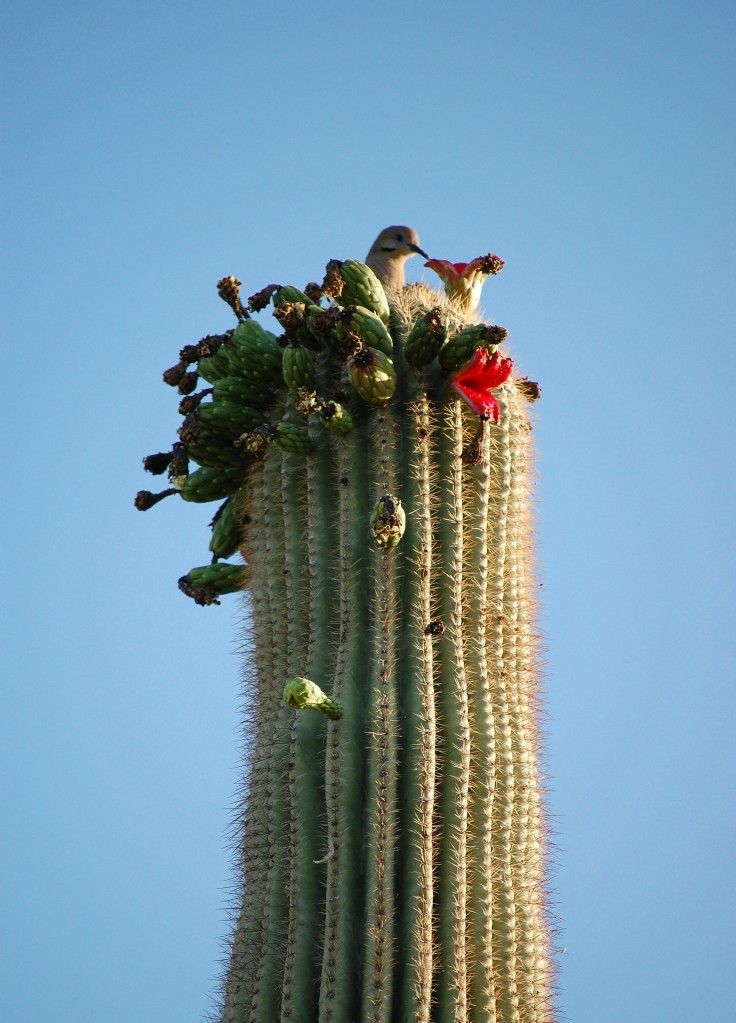
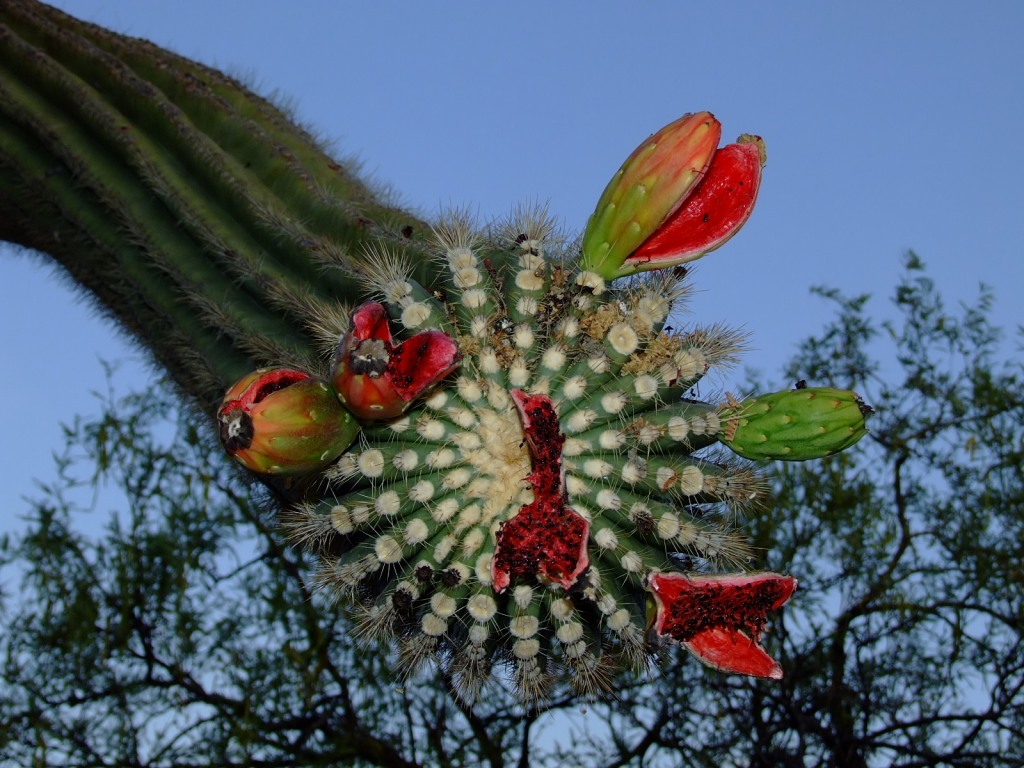
Humans have been living in southern Arizona longer than saguaros! Saguaros have been on the move for 10,000 years, and, according to the fossil record, arrived in the Tucson area around 8,000 years ago. In this time, the saguaro has established itself as central to the culture and ecology of this region!
Saguaros form the foundation of our incredible desert ecosystem, and we must respect and protect these giant guardians of the Sonoran Desert! Want to learn more about these beautiful, unique plants? Learn about the threats to the saguaro posed by the invasive species buffelgrass. And visit the Desert Museum to learn more about saguaros and see them up close and in-person!
Written by Elena Makansi.
2 Comments Add yours